Source:Xinhua 2015-09-23
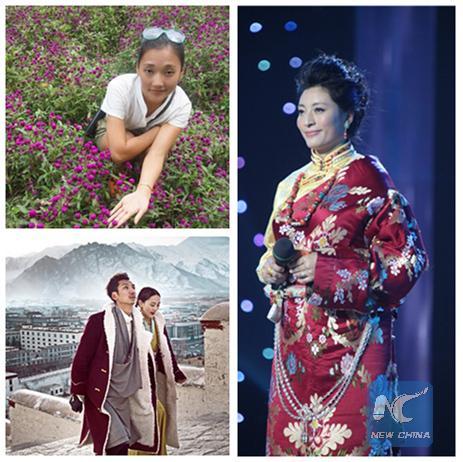
Combo photo of three young Tibetans who have walked out of their mountain-locked homeland and are seeking dreams in cities.
When talking about Tibetans, many people would conjure up red cheeks, sun-tanned skin and shy smiles - a symbolic image that they believe can represent the people on the "roof of the world." It's true but not all. As more young Tibetans get educated and land jobs in cities, they are reshaping the stereotypical image that has dominated world narration about their ethnic group for centuries.
The following are stories of three young Tibetans who have walked out of their mountain-locked homeland and are seeking dreams in Chengdu, capital of southwest China's Sichuan Province.
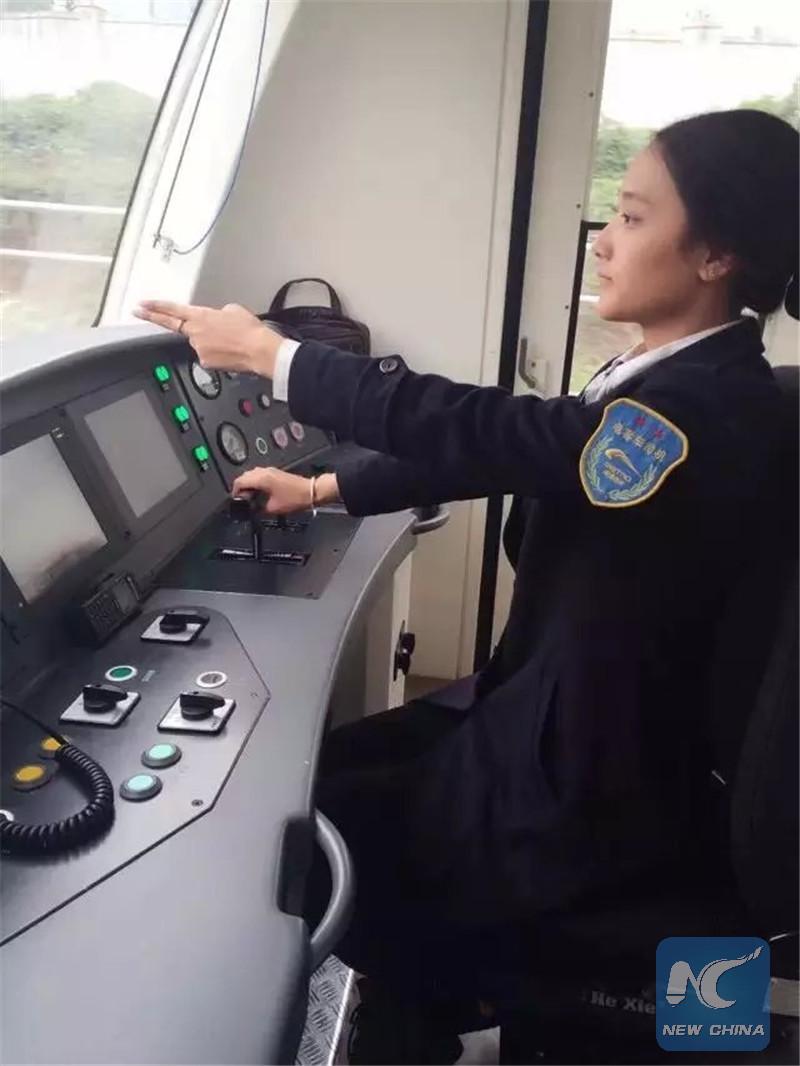
Photo of Xiao Fang driving metro. (Photo provided by Xiao Fang)
Born in a remote village in Garze Tibetan Autonomous Prefecture of Sichuan, Xiao Fang has never imagined of becoming the first female Tibetan metro driver.
Xiao's mother is a Tibetan and father a Han. She was employed by a local tourism business to dance for tourists after graduating from junior high school, earning a meager income. Her fate changed thanks to a free vocational education program for children of Tibetan farmers and herdsmen initiated in 2009. Xiao entered a railway machinery school and nailed a job at Chengdu Metro Corporation after graduation.
Being a metro train driver sounds cool but it also requires one to be able to shift constantly from early bird to night owl.
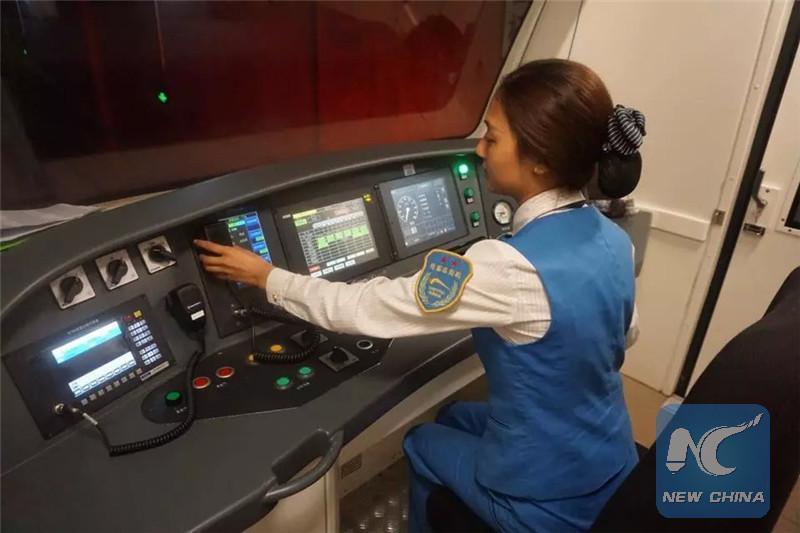
Photo of Xiao Fang driving metro. (Photo provided by Xiao Fang)
When on day shift, Xiao Fang has to get up at 4:30 a.m., and then carry out a regular check for the trains at 5:20 before leaving the depot at 6. On night shift, she has to work till midnight. "It's hard to get up that early in freezing winter, but all I can do is to bite the bullet and persist."
Working in the public transportation sector also means fewer weekends and holidays. Xiao Fang says she has missed Spring Festival family reunions for four consecutive years.
But all the sweat has paid off. She has bought an apartment and settled down in Chengdu. "Now my parents can come and live together with me," said Xiao.

Photo of Xiao Fang visiting a park. (Photo provided by Xiao Fang)
Xiao Fang has driven 80,000 kilometers, an equivalent of two laps around the earth.
"My goal is to become the first female metro driver that makes a record of 100,000 km!"
Chimed Wangmo is an anchorwoman of Kamba Satellite TV, a channel of Tibetan-language programs that covers the communities of Kamba dialect-speaking Tibetans.
Like Xiao Fang, becoming a TV anchorwoman was totally out of expectation for Chimed Wangmo.
Grown up in a small village in Garze, Wangmo is the oldest kid in the family. At a young age she started to help parents with family chores and farm work. Being a teacher was her best plan for the future.
Life developed as planned. She went to a local school that trains teachers, but an unexpected success in a local civil servants recruiting exam turned her into an anchorwoman. Her life has since changed, and Wangmo is now a household name among Kamba Tibetans.
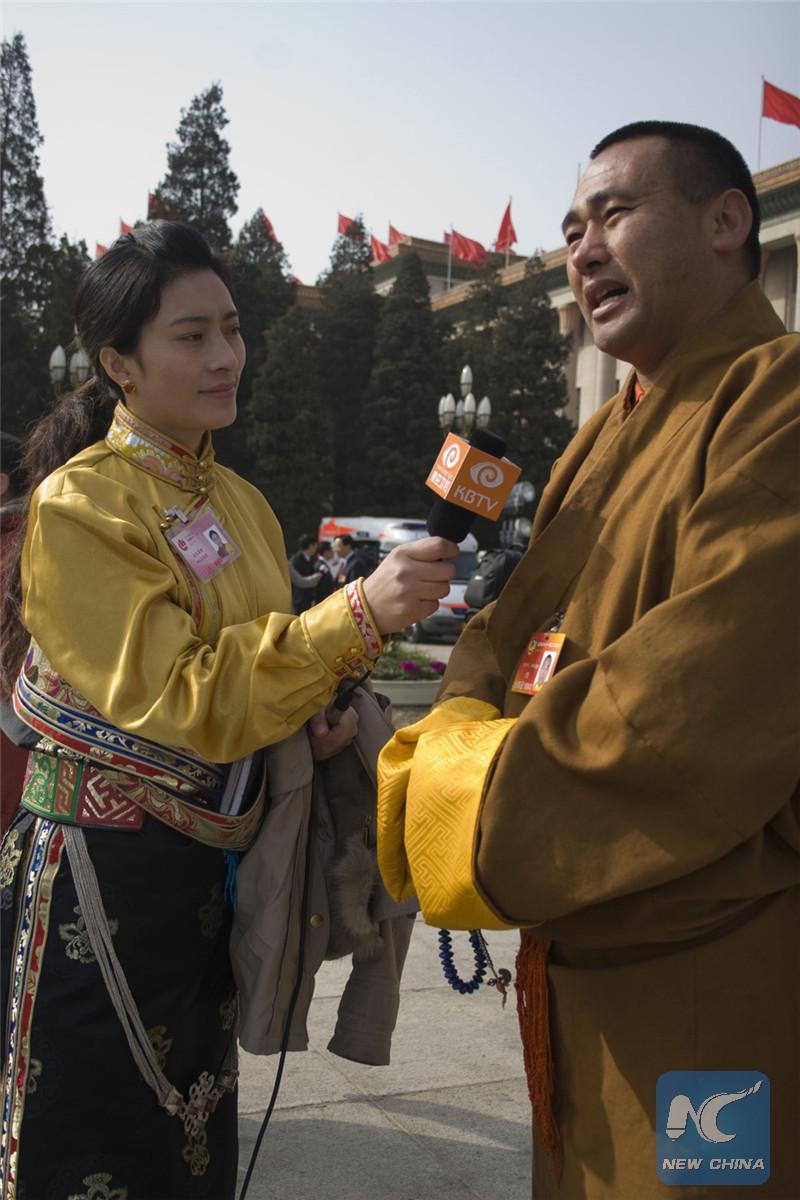
Photo of Chimed Wangmo doing an interview during China's annual national legislative and political consultative sessions in Beijing in March 2011. (Photo provided by Chimed Wangmo)
Wangmo is also a chief anchor of the satellite TV after 16 years of hard work. She has reported a lot of important news events, including the annual national legislative and political consultative sessions in Beijing, the country's most important annual political events.
Wangmo has never forgotten her cultural root. On TV, she always appears in elegant Tibetan robes, be it a newscast, an on-camera interview, or a gala show.
Gerong Phuntsok: Advertiser of Tibetans
Gerong Phuntsok stirred an online sensation when he uploaded in March his wedding photos with Dawa Drolma onto his Weibo, a popular microblogging service in China. The photos, showing the couple in both traditional ethnic costumes and modern outfits, captivated millions of Chinese social media users.
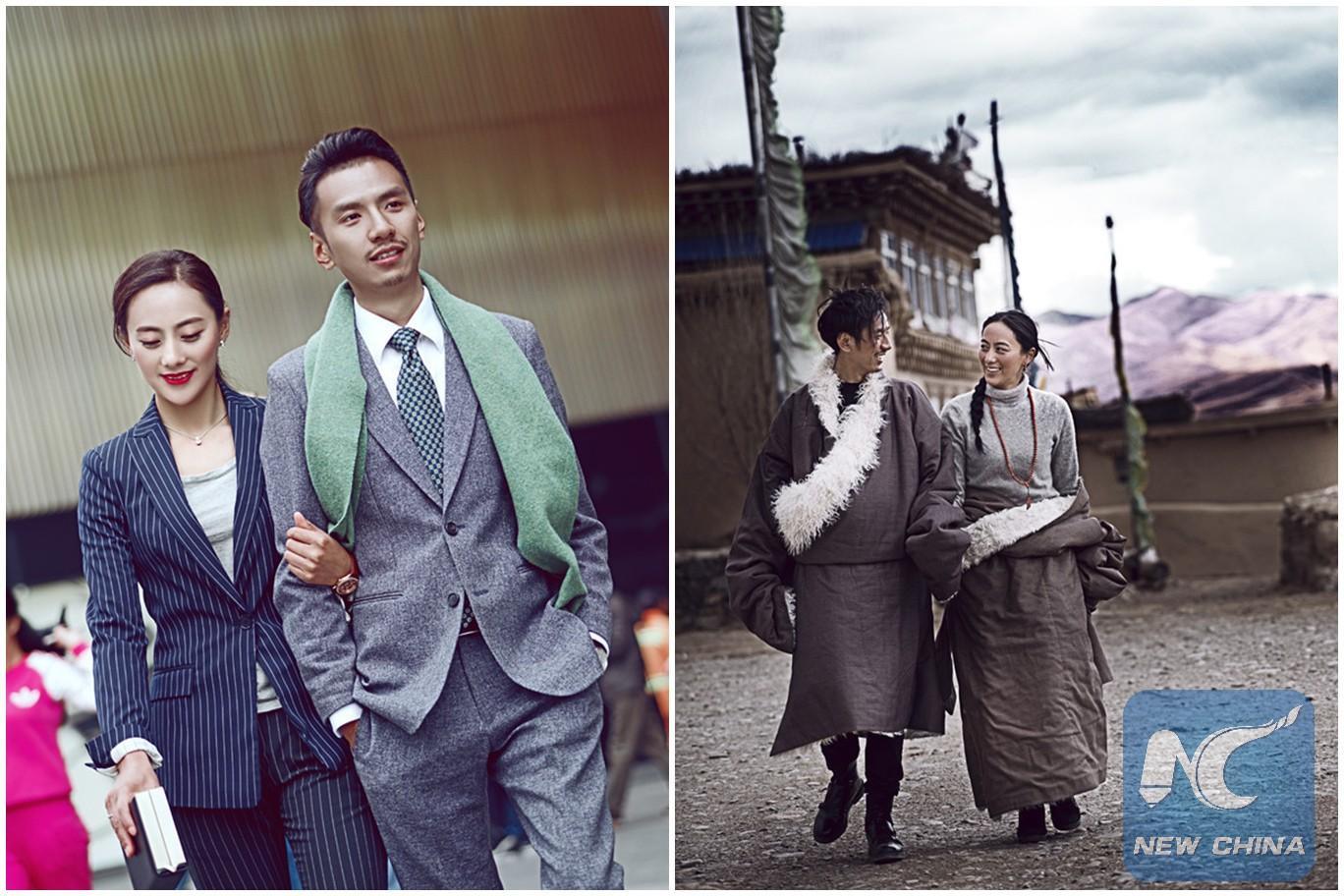
Combo photo of young Tibetan couple Gerong Phuntsok and Dawa Drolma in modern outfits and traditional ethnic costumes for their wedding photos. (Web photo)
In one photo, the couple, wearing big sunglasses, sit in a trendy Starbucks store holding cups of coffee. In another, they're wearing Tibetan robes, praying in front of the Potala Palace in Lhasa.
Phuntsok runs an advertising company with friends in Chengdu after graduation from Beijing-based Minzu University, an institution mostly for ethnic minorities. He was born in Rongchag County, 11 hours' drive from the provincial capital.
The romantic photos have made Phuntsok a good advertiser of Tibetan culture who offers people a window to see how young Tibetans live in a fast-modernizing society.

Combo photo of young Tibetan couple Gerong Phuntsok and Dawa Drolma in modern outfits and traditional ethnic costumesfor their wedding photos. (Web photo)
Having lived in big cities for many years, Phuntsok finds he's still deeply connected to his ethnic culture. That's why the couple traveled back to their hometowns, made a pilgrimage to Lhasa, and shot part of their wedding photos there.
"I think we found an echo with other web users," Phuntsok says. "As we fight for our dreams, some of us get lost. So we want to say with the photos: stick to your beliefs."
Copyright © Xizang Daily & China Xizang News All rights reserved
Reproduction in whole or in part without permissions prohibited
Index Code: 藏 ICP 备 05000021 号
Producer: Xizang Daily International Communication Center